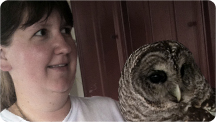Fooling Birders
Beware, internet surfers – today is April Fool’s Day. Birders are not immune to being played for fools, if these pranks from years past are any indication.
The exciting headline Extinct Carolina Parakeet Rediscovered in Honduras appeared on April 1, 2009. This one came complete with a news release from the Cornell Lab of Ornithology, which added authenticity to an unbelievable discovery. If you fell for this one, you were certainly not alone!
Last year Ted Floyd revealed a list of ABA Checklist Changes that had some birders just a bit freaked out. The list highlighted crazy splits, maddening lumps, and major, unprecedented changes to the ABA Area.
Also last year, blogger tai haku broke the story of ESPN’s entry into the competitive birding market: Email from ESPN: the “American Big Day Birding League.”
Bill of the Birds had a great prank last year, too, when he revealed a major change at BirdWatcher’s Digest: Our New Name!. The magazine was to be rebranded Wild Bird Watcher’s World (and Blooms).
By now, readers of 10,000 Birds must know they need to be on their toes on April Fool’s Day. Last year they got us with an unbelievable giveaway opportunity: Win a Free Trip to Thailand! In 2010 Corey revealed a shocking overseas birder conspiracy: Short-toed Treecreepers Do Not Exist. And in 2009 Corey reported seeing a Pileated Woodpecker in Queens, complete with photo documentation.
Google has been offering up pranks on April 1st for years. They featured birds in an early prank: Google’s PigeonRank was revealed on April 1, 2002. The search engine’s cruelty-free method of determining page rank uses trained pigeons to recognize objects regardless of spacial orientation. It’s all very complicated.

































